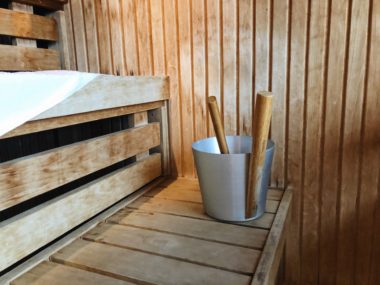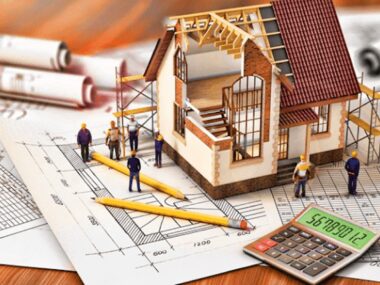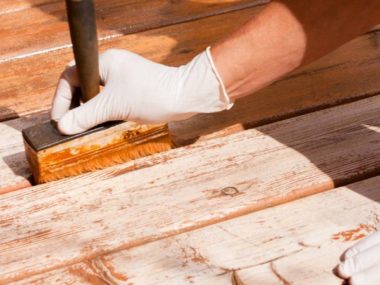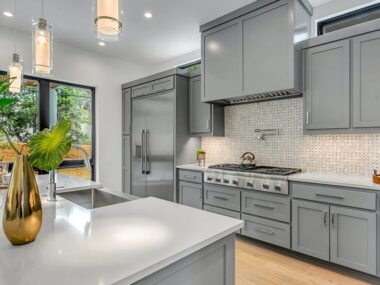Your Guide to a Successful Home Change
Your home is a significant investment and a reflection of your personal style. Whether you dream of a small update or a big renovation, home improvement projects add comfort, beauty, and value. But knowing where to begin can be tough.
Upgrading your home needs careful planning. This includes everything from checking its structure to choosing the right finishing touches. In this guide, we will walk you through the entire process, starting from the very foundation. We will cover how to assess your home’s health, improve its interior, and boost its outdoor appeal. We will also explore smart material choices, such as durable chip coatings for floors, which offer both great looks and lasting strength.
Join us as we share expert tips to help you turn your house into the home you’ve always wanted. We will make sure every step of your project is a success.
Embarking on a home improvement journey is an exciting prospect, offering enhanced aesthetics, improved functionality, and increased property value. However, a successful change doesn’t happen by chance; it requires thoughtful planning and a clear vision. From minor cosmetic updates to major structural overhauls, every project presents an opportunity to tailor your living space to your evolving needs and preferences.
One of the first steps is to define your goals. Are you looking to enhance your home’s resale value, create a more comfortable living space, or address specific maintenance concerns? Understanding your primary objectives will guide your decisions throughout the process. Next, consider your budget. A realistic financial plan is crucial, encompassing not just the cost of materials and labor but also a contingency fund for unexpected expenses. Many homeowners find it beneficial to explore financing options or phased approaches to manage larger projects.
Deciding between a DIY approach and professional help is another key consideration. While some smaller tasks might be suitable for the ambitious homeowner, complex projects often benefit from the expertise of seasoned professionals. They bring specialized skills, tools, and knowledge of building codes, ensuring the highest quality and safety standards. A well-executed home change can yield significant returns, both in terms of personal enjoyment and financial gain.
Starting Strong: Assessing Your Home’s Structural Health
Before any aesthetic upgrades or interior redesigns, the health of your home’s foundation and core structure must be a top priority. A strong foundation is literally the bedrock of your entire house, and overlooking potential issues can lead to costly and extensive repairs down the line. We recommend a thorough structural assessment to identify any existing problems.
Begin with a detailed foundation inspection. Look for cracks in the basement walls or slab, signs of settling, or moisture intrusion. Even hairline cracks can indicate underlying issues that need professional attention. Similarly, evaluate the concrete slab in areas like garages or basements for unevenness, spalling, or significant cracking. Addressing these issues early is a crucial part of any home improvement concrete repair. Ensuring these structural elements are sound provides a stable base for all subsequent improvements.
Next, examine the integrity of your walls, both interior and exterior. Check for bowing, sagging, or significant cracks that might suggest structural stress. Moisture detection is equally vital; dampness in basements, crawl spaces, or attics can lead to mold, wood rot, and compromised structural components. An experienced professional can conduct a comprehensive moisture assessment and recommend appropriate remediation. Finally, don’t neglect your roof. A damaged or aging roof can lead to water infiltration, impacting the entire home’s structure and interior. Regular inspections and timely repairs are essential for preventing widespread damage. A professional evaluation by a structural engineer or a reputable home inspector can provide an unbiased assessment of your home’s current condition, offering peace of mind and a roadmap for necessary repairs before you invest in visible upgrades.
Key Considerations for a Successful Home Improvement Project
Once you have a clear understanding of your home’s structural health, you can move forward with planning your improvement projects. This phase is critical for ensuring a smooth process and a satisfactory outcome.
Setting a realistic budget is paramount. Beyond the initial estimates, factor in potential cost overruns, which can often be 10-20% of the project’s total. This contingency fund is vital for unexpected issues that may arise during construction. Creating a detailed timeline helps manage expectations and coordinate schedules, especially if you’re working with multiple contractors. Remember to account for material delivery times, inspection schedules, and potential weather delays.
Obtaining necessary permits is not just a legal requirement but also a safeguard for your project. Permits ensure that your renovations meet local building codes and safety standards, protecting your investment and ensuring your home remains insurable. Thoroughly vetting contractors is perhaps one of the most important steps. We recommend getting multiple bids, checking references, reviewing portfolios, and verifying licenses and insurance. A reputable contractor will communicate clearly, provide detailed contracts, and stand behind their work. Finally, prioritize your needs versus your wants. While it’s tempting to include every desired feature, focusing on the most impactful improvements first will ensure your budget and efforts are directed where they matter most, delivering the greatest value and satisfaction.
The Core of Your Home Improvement: Interior Upgrades
With your home’s foundation secure and your project carefully planned, the focus shifts to changing the interior spaces. Interior upgrades are where your personal style truly comes to life, enhancing comfort, functionality, and aesthetic appeal.
Kitchen remodeling often tops the list for homeowners, as it’s the heart of the home and a major driver of property value. Upgrades can range from new cabinetry and countertops to modern appliances and improved layouts, creating a more efficient and enjoyable space for cooking and gathering. Bathroom renovations offer similar returns, providing a fresh, spa-like retreat with updated fixtures, tiling, and improved ventilation.
Basement finishing is an excellent way to add valuable living space without expanding your home’s footprint. This can include creating extra bedrooms, a family room, a home office, or even a dedicated entertainment area. Energy-efficient windows are a smart investment, as they reduce utility bills, improve insulation, and enhance curb appeal. Similarly, updating HVAC systems ensures optimal climate control and energy efficiency, while modernizing electrical and plumbing systems is essential for safety, functionality, and accommodating contemporary demands. Each of these interior upgrades contributes significantly to the overall comfort, value, and livability of your home.
Elevating Your Floors: Durability Meets Design
Flooring is a foundational element of interior design, impacting both the look and feel of a space. While traditional options like hardwood, tile, and carpet each offer distinct advantages, modern innovations have introduced highly durable and aesthetically versatile solutions, particularly for high-traffic or demanding areas.
Hardwood floors provide timeless elegance and warmth, but require careful maintenance and can be susceptible to scratches and moisture. Tile offers durability and water resistance, making it ideal for kitchens and bathrooms, though it can be cold underfoot and challenging to repair. Carpet provides comfort and sound absorption, but can trap allergens and stains. Vinyl plank flooring has gained popularity due to its versatility, water resistance, and affordability, offering a look that mimics wood or stone.
However, for ultimate durability in garages, basements, workshops, or even commercial spaces, advanced systems like chip coatings (also known as flake or decorative chip systems) stand out. These multi-layer flooring solutions combine industrial-grade resilience with limitless design possibilities.
What are Chip Coatings? Chip coatings are a specific type of concrete coating system where decorative vinyl flakes are broadcast into a wet base coat and then sealed with a clear topcoat. This creates a seamless, durable, and visually appealing surface that can mimic the look of terrazzo or granite.
How Do Chip Coating Systems Work? A typical chip coating system consists of three main layers:
- Base Coat: This is the foundational layer, applied directly to the prepared concrete. It’s usually an epoxy, polyurea, or polyaspartic resin. This layer provides adhesion to the concrete and serves as the bed for the flakes.
- Vinyl Flakes (Decorative Chips): While the base coat is still wet, these flakes are broadcast (scattered) across the surface. These are not just for looks; they also add texture and hide imperfections.
- Topcoat: A clear, protective layer (often polyaspartic or polyurethane) is applied over the flakes once the base coat has cured. This seals the flakes, provides UV stability, chemical resistance, and the desired finish (gloss, satin, or matte).
What Materials Are Used? The primary materials include:
- Resins: Polyurea and polyaspartic are highly favored for their flexibility, rapid cure times, and superior durability compared to traditional epoxy. Epoxy is also used, particularly for base coats.
- Vinyl Flakes: Composed of water-based resin materials, these flakes are integrally colored and come in various sizes and blends. For example, Galaxy’s polyaspartic home chips offer an excellent example of how these systems can transform residential spaces with high-performance materials.
Benefits and Advantages: Chip coatings offer numerous advantages over other flooring options:
- Extreme Durability: They are designed to withstand heavy foot traffic, vehicle weight, chemical spills (oil, salt, gasoline, grease), and impact from dropped tools. They create a protective barrier that is significantly stronger than bare concrete or paint.
- Aesthetic Appeal & Customization: Available in over 20 standard color blends and multiple chip sizes (1/16″, 1/8″, 1/4″, and even larger “jumbo” flakes), they offer unparalleled customization. You can create unique patterns and textures to match any decor.
- Rapid Installation & Cure: Many advanced systems, particularly those using polyurea and polyaspartic resins, can be installed and fully cured in as little as one day, allowing vehicle traffic within 24 hours. This minimizes downtime for homeowners and businesses.
- Low Maintenance: The non-porous, seamless surface is easy to clean, resisting stains, mold, and bacteria buildup. A simple sweep and mop are usually sufficient.
- Improved Safety: The flakes provide a slight texture, improving slip resistance, especially when combined with anti-slip additives in the topcoat.
- UV Stability: Modern chip systems are completely UV stable, preventing pigment deterioration and fading over time, making them ideal for both indoor and outdoor applications.
- Property Value: Their high-end appearance and lasting durability significantly contribute to the aesthetics and value of a property.
Applications: Chip coatings are highly versatile and suited for various environments:
- Residential: Garages, basements, patios, pool decks, home gyms, workshops.
- Commercial: Retail spaces, showrooms, offices, veterinary clinics, restrooms, schools.
- Industrial: Production areas, service bays, warehouses, food processing facilities.
Installation Process (Overview): While professional installation is highly recommended, the general steps include:
- Surface Preparation: Mechanical grinding or shot-blasting to create a porous profile, followed by thorough cleaning and crack repair.
- Base Coat Application: Even application of the chosen resin (epoxy, polyurea, or polyaspartic).
- Flake Broadcasting: Scattering vinyl flakes over the wet base coat, either a full broadcast (covering 100% of the surface) or a partial broadcast (lighter coverage).
- Excess Flake Removal: Once cured, excess flakes are scraped and vacuumed.
- Topcoat Application: One or more layers of a clear, protective topcoat are applied to seal and protect the system.
Full Broadcast vs. Partial Broadcast:
- Full Broadcast: Flakes are applied to rejection, meaning the surface is completely covered. This provides maximum durability, texture, and hides all concrete imperfections.
- Partial Broadcast: Fewer flakes are used, allowing more of the base coat color to show through. This offers a different aesthetic and can be slightly less textured.
Chip Coatings vs. Traditional Epoxy/Paint: Traditional epoxy-only or paint coatings lack the multi-layer strength and decorative versatility of chip systems. Paint chips easily, offers minimal protection, and fades. Standard epoxy can be durable but is often less flexible, can yellow from UV exposure, and lacks the inherent slip resistance and aesthetic depth of a flake system. Polyaspartic and polyurea chip systems are four times stronger and significantly more flexible than traditional epoxy, making them superior in performance and longevity.
Durability and Maintenance: A properly installed chip system can last for decades. Its thickness can range from 2-3 mils for well-maintained concrete up to 250 mils for older or damaged floors, providing robust protection. Maintenance is minimal; regular sweeping and occasional mopping with a mild cleaner are usually all that’s needed.
Why Professional Installation Matters: Achieving the optimal performance and longevity of a chip coating system heavily relies on proper surface preparation and application techniques. Professionals possess the specialized equipment, expertise, and experience to ensure adequate adhesion, even flake distribution, and correct curing, thereby preventing issues such as peeling, bubbling, or premature wear.
Boosting Curb Appeal and Exterior Functionality
Beyond the interior, the exterior of your home plays a crucial role in its overall appeal and functionality. Enhancing your home’s curb appeal not only creates a welcoming atmosphere but also significantly increases its market value.
Landscaping is often the first impression. Thoughtful design, including healthy lawns, vibrant flowerbeds, strategically placed shrubs, and well-maintained pathways, can dramatically lift your home’s exterior. Exterior painting provides a fresh look, protects your home from the elements, and allows you to update its style. Choosing a color palette that complements your home’s architecture and the surrounding environment is key.
Siding replacement is a more substantial upgrade that offers both aesthetic and practical benefits. New siding can improve insulation, reduce maintenance, and completely transform your home’s facade. Deck and patio construction or renovation expands your outdoor living space, providing areas for relaxation, dining, and entertaining. These additions become extensions of your home, enhancing lifestyle and property value. Driveway resurfacing, whether with asphalt, concrete, or decorative coatings, improves functionality and visual appeal. Ultimately, outdoor lighting enhances safety, accentuates architectural features, and extends the usability of your outdoor spaces into the evening. Each of these exterior improvements contributes to a more attractive, functional, and valuable home.
Planning Your Next Home Improvement for Maximum ROI
When planning home improvements, maximizing your return on investment (ROI) is often a key consideration. While every upgrade adds value, some projects consistently yield higher returns than others. Focusing your efforts on these areas can ensure your investment pays off, whether you plan to sell soon or enjoy your home for years to come.
Historically, kitchen and bathroom remodels have offered some of the highest ROIs. These areas are critical to daily living and are heavily scrutinized by potential buyers. Even minor updates, such as fresh paint, new fixtures, or updated countertops, can make a significant difference. Improving curb appeal is another powerful strategy. A well-maintained exterior, including landscaping, a fresh coat of paint, and a welcoming entrance, creates a strong first impression that can attract buyers and increase perceived value.
Adding square footage, such as finishing a basement or adding a deck, can directly increase your home’s usable space, a highly sought-after feature. However, ensure any additions are proportionate to your existing home and neighborhood. Finally, improving energy efficiency is increasingly important to homeowners. Upgrades like energy-efficient windows, improved insulation, and modern HVAC systems not only reduce utility costs but also appeal to environmentally conscious buyers.
Here’s a list of top projects with the highest ROI:
- Minor kitchen remodel
- Bathroom remodel
- Deck or patio addition
- Entry door replacement
- Garage door replacement
- Manufactured stone veneer
- Siding replacement
- Window replacement
- Basement remodel
The Finishing Touches: Post-Project Cleanup and Ongoing Maintenance
After the dust settles and your home improvement project is complete, the final steps involve a thorough cleanup and establishing a routine for ongoing maintenance. These often-overlooked phases are crucial for preserving your investment and ensuring your newly renovated spaces remain beautiful and functional.
Post-renovation cleaning is more than just tidying up. It involves removing construction dust, debris, and any lingering residues that can affect air quality and the longevity of your new finishes. This can be a significant undertaking, especially for larger projects. After a project, professional services, such as a Woburn cleaning and janitorial firm for residents, can restore order and ensure every surface is immaculate, allowing you to enjoy your revitalized home fully.
Once the area is clean, creating a home maintenance checklist is essential. This proactive approach helps prevent minor issues from escalating into major problems. Include tasks such as inspecting and cleaning gutters, checking HVAC filters, testing smoke detectors, and sealing any gaps around windows and doors. For specific finishes, such as chip coatings, regular sweeping and occasional mopping will help keep them looking new. Touch-up painting can address scuffs and marks, while fixture polishing maintains the shine of metals. Regular maintenance not only preserves the aesthetic appeal of your home but also protects its structural integrity and maximizes the lifespan of your investments, ensuring your home remains a source of pride and comfort for years to come.





